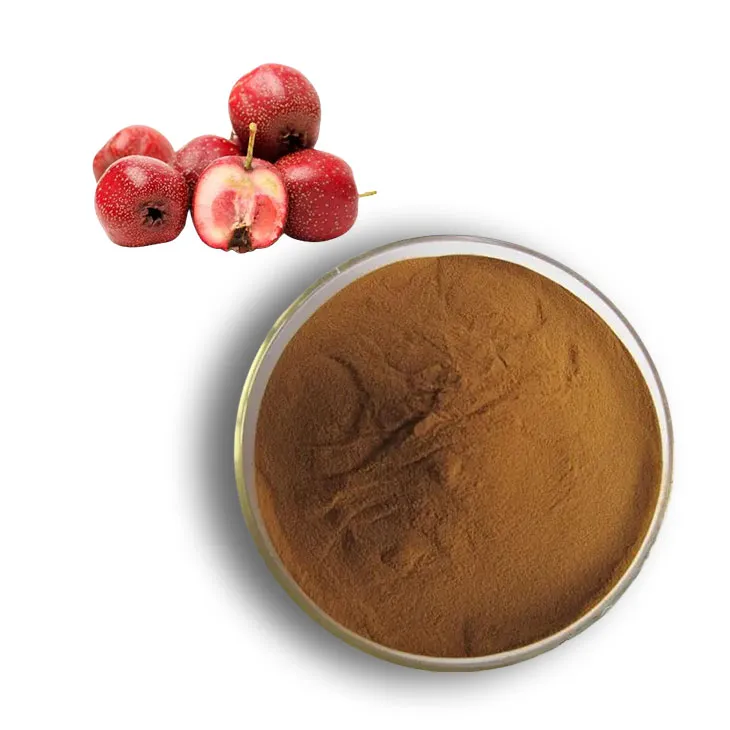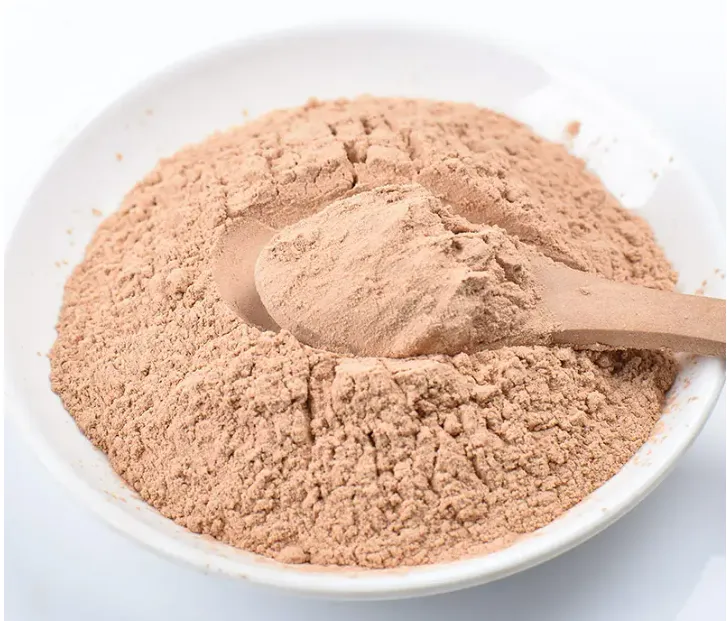- 0086-571-85302990
- sales@greenskybio.com
The best source of natural hawthorn extract.
2024-11-29

Introduction
Hawthorn has been a plant of great significance in traditional medicine for centuries. Its extract is known for various health benefits, including improving heart health, digestion, and antioxidant properties. However, not all Hawthorn Extracts are of the same quality. The source of the hawthorn plays a crucial role in determining the potency and purity of the extract. In this article, we will explore the best sources of natural Hawthorn Extract by considering factors such as soil quality, climate, and plant maturity.

Soil Quality
1. Rich in Nutrients
The soil in which hawthorn plants grow significantly impacts the quality of the extract. Hawthorn thrives in soil that is rich in nutrients. A soil with a good balance of nitrogen, phosphorus, and potassium is ideal. Nitrogen helps in the growth of leaves and stems, which are important parts of the plant from which the extract is derived. Phosphorus is crucial for root development and flower formation, while potassium aids in overall plant health and disease resistance.
2. Well - Drained Soil
Well - drained soil is another important factor. Hawthorn plants do not tolerate waterlogged conditions well. Excess water can lead to root rot and other diseases, which can affect the quality of the plant and ultimately the extract. Sandy loam or loamy soil types that allow for proper drainage are often the best choices for hawthorn cultivation.
3. pH Level
The pH level of the soil also matters. Hawthorn generally prefers slightly acidic to neutral soil, with a pH range of around 6.0 - 7.0. In soil with the appropriate pH, the plants can better absorb nutrients from the soil. If the soil is too acidic or alkaline, it can lead to nutrient deficiencies, which will be reflected in the quality of the Hawthorn Extract.

Climate
1. Temperature
Hawthorn is a hardy plant, but it still has temperature preferences. It can tolerate cold winters, which is an advantage in some regions. However, extreme cold for extended periods can damage the plants. In the growing season, a moderate temperature range is ideal. Temperatures between 15 - 25°C (59 - 77°F) are conducive to healthy growth. High temperatures above 30°C (86°F) may cause stress to the plants, affecting their physiological processes and potentially the quality of the extract.
2. Sunlight
Hawthorn requires充足的 sunlight for photosynthesis. Adequate sunlight ensures that the plant can produce sufficient energy to grow and develop. It also affects the synthesis of secondary metabolites, which are important components of the hawthorn extract. However, in extremely sunny and hot regions, some shading may be required to prevent sunburn on the leaves and excessive water loss through transpiration.
3. Rainfall
Moderate rainfall is beneficial for hawthorn growth. Too little rainfall may require artificial irrigation, and inconsistent watering can lead to stress on the plants. On the other hand, excessive rainfall can cause water logging problems, as mentioned earlier. An annual rainfall of around 600 - 800 mm is generally considered suitable for hawthorn cultivation, but this can vary depending on the soil type and drainage conditions.

Plant Maturity
1. Young Plants
Young hawthorn plants may not be the best source for extract. They are still in the process of building their structure and accumulating nutrients. The concentration of active compounds in young plants is generally lower compared to mature plants. Extracts from young plants may lack the full spectrum of beneficial compounds that are characteristic of hawthorn.
2. Mature Plants
Mature hawthorn plants, typically those that are at least 3 - 5 years old, are a better source for extract. By this time, the plants have fully developed their root systems, which enable them to absorb more nutrients from the soil. They also have a higher concentration of active compounds such as flavonoids, procyanidins, and organic acids. These compounds are responsible for the medicinal properties of the hawthorn extract.
Geographical Regions
1. Europe
Europe has a long history of hawthorn cultivation. In regions such as the Mediterranean, the climate is generally favorable for hawthorn growth. The soil in many parts of Europe is rich in nutrients, and the traditional farming practices often ensure proper plant care. Hawthorn plants in Europe are known to produce high - quality extracts. For example, in France and Italy, hawthorn has been used in traditional medicine for centuries, and the extracts are highly regarded for their purity and potency.
2. Asia
Asia is another major source of hawthorn. In China, hawthorn is widely cultivated. The diverse climate and soil conditions across different regions of China offer a range of possibilities for hawthorn growth. In some mountainous areas, the soil is well - drained and rich in minerals, and the climate with distinct seasons provides the right conditions for the plants to mature properly. Chinese hawthorn extracts are often used in traditional Chinese medicine and are becoming increasingly popular in the global market due to their effectiveness.
3. North America
In North America, hawthorn is native to many regions. The natural habitats in North America, such as forests and open meadows, can be ideal for hawthorn growth. The native hawthorn species have adapted to the local climate and soil conditions. However, the quality of the extract may vary depending on the specific location and the management of the plants. Some areas in the Appalachian Mountains and the Midwest are known for their relatively high - quality hawthorn sources.
Wild vs. Cultivated Hawthorn
1. Wild Hawthorn
Wild hawthorn has its own advantages. It grows in its natural environment without the interference of human - introduced pesticides or fertilizers. This can make the extract more "natural" in the sense that it is free from chemical residues. However, wild hawthorn may also be exposed to environmental pollutants depending on the location. Additionally, the collection of wild hawthorn needs to be done sustainably to avoid over - harvesting, which can damage the natural ecosystem.
2. Cultivated Hawthorn
Cultivated hawthorn allows for better control of the growing conditions. Farmers can optimize the soil quality, provide the appropriate amount of water and sunlight, and protect the plants from pests and diseases. This can result in a more consistent quality of the extract. However, the use of pesticides and fertilizers in cultivation needs to be carefully managed to ensure that the extract does not contain harmful residues.
Conclusion
The best source of natural hawthorn extract is a complex consideration that involves multiple factors. Soil quality, climate, plant maturity, geographical region, and whether the hawthorn is wild or cultivated all play important roles in determining the potency and purity of the extract. To obtain high - quality hawthorn extract, it is necessary to consider these factors comprehensively. Whether it is from the fertile soils of Europe, the diverse landscapes of Asia, or the native habitats in North America, hawthorn has the potential to provide excellent extracts when the right conditions are met. Additionally, a balance between wild collection and cultivation needs to be struck to ensure both the quality of the extract and the sustainability of the hawthorn resources.
FAQ:
What are the main regions known for high - quality hawthorn for extract?
Some regions with suitable climate and soil conditions are well - known for high - quality hawthorn. For example, certain areas in Europe and Asia. In Europe, parts of Eastern Europe have a long history of hawthorn cultivation. The cool climate and fertile soil contribute to the growth of healthy hawthorn trees. In Asia, China has a large area of hawthorn cultivation. The diverse climates in different regions of China allow for the growth of various types of hawthorn with high quality for extract production.
How does soil quality affect the quality of hawthorn extract?
Soil quality is crucial. Rich, well - drained soil with proper nutrient content promotes healthy hawthorn growth. Soils rich in organic matter provide essential nutrients like nitrogen, phosphorus, and potassium. Adequate drainage prevents waterlogging, which can lead to root rot and affect the overall health of the plant. Good soil quality also influences the content of active compounds in hawthorn, such as flavonoids. Hawthorn grown in high - quality soil may have a higher concentration of these beneficial compounds, resulting in a more potent and pure extract.
What role does climate play in the production of high - quality hawthorn extract?
The climate has a significant impact. Hawthorn generally thrives in temperate climates. Adequate sunlight is necessary for photosynthesis, which helps the plant produce the compounds that are important for the extract. A proper amount of rainfall, not too much or too little, ensures the normal growth of the plant. Extreme weather conditions like severe frost or heatwaves can be harmful. For example, a long - term cold climate may slow down the growth rate but can also increase the concentration of certain compounds in hawthorn, while a warm and humid climate with proper sunlight can lead to a large yield of healthy hawthorn fruits suitable for high - quality extract production.
How can one determine the maturity of hawthorn for the best extract?
The maturity of hawthorn can be determined in several ways. Visually, when the fruits are fully colored and plump, it is a sign of maturity. The color of the hawthorn fruits typically changes from green to red or yellow - red depending on the variety. Also, the texture becomes firmer as it matures. Biochemically, the content of certain compounds, such as flavonoids and organic acids, reaches its peak at maturity. For example, the content of flavonoids like rutin and Quercetin in mature hawthorn fruits is relatively high, which is important for the quality of the extract.
Are there any specific hawthorn varieties that are considered the best source for extract?
Yes, there are certain varieties. For example, Crataegus pinnatifida in China is widely used for extract production. It has a relatively high content of bioactive compounds. In Europe, Crataegus laevigata is also a popular variety for extract. These varieties have been studied and found to have good medicinal properties, and their extracts are often used in traditional medicine and dietary supplements.
Related literature
- The Influence of Environmental Factors on Hawthorn Quality and Extract Composition"
- "Hawthorn Extract: From Plant to Product - A Review of Quality Sources"
- "Soil and Climate Requirements for Optimal Hawthorn Growth and Extract Potency"
- ▶ Hesperidin
- ▶ Citrus Bioflavonoids
- ▶ Plant Extract
- ▶ lycopene
- ▶ Diosmin
- ▶ Grape seed extract
- ▶ Sea buckthorn Juice Powder
- ▶ Fruit Juice Powder
- ▶ Hops Extract
- ▶ Artichoke Extract
- ▶ Mushroom extract
- ▶ Astaxanthin
- ▶ Green Tea Extract
- ▶ Curcumin
- ▶ Horse Chestnut Extract
- ▶ Other Product
- ▶ Boswellia Serrata Extract
- ▶ Resveratrol
- ▶ Marigold Extract
- ▶ Grape Leaf Extract
- ▶ New Product
- ▶ Aminolevulinic acid
- ▶ Cranberry Extract
- ▶ Red Yeast Rice
- ▶ Red Wine Extract
-
Cocoa Extract
2024-11-29
-
Purple Sweet Potato Extract
2024-11-29
-
American Ginseng Root Extract
2024-11-29
-
Nettle Root Extract
2024-11-29
-
Chia Seed Powder
2024-11-29
-
Motherwort Extract
2024-11-29
-
Withania Somnifera Extract
2024-11-29
-
Marigold Extract
2024-11-29
-
Lemon Extract
2024-11-29
-
Kidney Bean Extract
2024-11-29





















